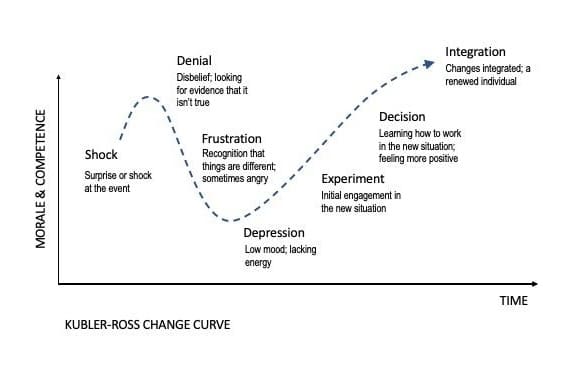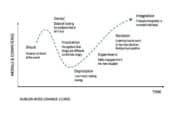Last month, I attended the Marketing AI Conference (MAICON) hosted by the Marketing AI Institute, an annual event that has grown into a hub for marketers advancing AI in their field.
Now in its fifth year, MAICON attracted over 1,100 people interested in AI’s rapid progress and potential. Industry experts like Paul Roetzer, Adam Brotman and Andy Sack shared insights and the unveiling of OpenAI’s new model, “Strawberry,” added a sense of urgency to the event.
One major theme was that even with AI’s rapid evolution, many marketers and organizations lag in adoption. To thrive in the future, marketers need a strategic, organization-wide approach to AI or risk being left behind as AI-native competitors move ahead.
The marketing AI chasm
In his opening keynote, Roetzer showcased how quickly image generation has evolved, producing high-quality images in under a minute. Yet, as I walked around the conference, it was clear that many marketers were still testing the waters with AI.
Most were experimenting with GPT models, often informally, while their organizations worked to formalize AI strategies. This has led to many “random acts of AI” disconnected from broader business goals.
Dig deeper: Why brands must bridge the knowledge gap in AI adoption
way-to-earth">The disconnect: A meteor on its way to earth
Those closely tracking AI’s progress are like astrophysicists monitoring a meteor. They see the speed and scale of change and recognize the potential for disruption. Meanwhile, many marketers continue business as usual, failing to prepare for AI’s impact.
AI is the next big disruptor for organizations and marketers. Just as digital-native companies like Airbnb revolutionized traditional industries, AI-native companies with AI-native marketing teams will reshape the future.
At last year’s MAICON, Dan Slagen shared the story of Tomorrow.io, an $80 million company with only four marketers. These marketers began every initiative by asking, “How do we use AI to drive this work?” Leadership did the same. That’s the foundation of an AI-native marketing organization.
This year, Slagen described how his team used AI to pitch Tomorrow’s weather prediction products to a major movie studio. They analyzed the studio’s films, identified scenes affected by weather and created a compelling AI-driven presentation like a studio film. With such a small team, there is no way this could have been done without AI. Their innovative approach launched them into the next stage of the RFP, making a small organization look big.
Marketing leaders who view AI solely as a way to cut headcount risk are getting left behind by organizations like Tomorrow.io, which leverage AI for innovation and growth.
Obstacles on the enterprise path: Navigating challenges to adoption
Why aren’t more marketers preparing for the coming wave of AI? The Kübler-Ross Change Curve, a framework for understanding the emotional progression through change, offers insight. Many marketers are in the early stages, expressing skepticism or nitpicking flaws, like the imperfections in AI-generated images. Some even feel depressed about the future. I recently spoke with college students worried about pursuing careers that might soon be obsolete.

These emotions contribute to organizational inertia, as fear of job displacement and uncertainty about AI can lead to hesitation around automation. Leaders may delay AI adoption, waiting for definitive proof that change is necessary.
Meanwhile, issues like copyright, IP concerns, data quality and responsible implementation need attention. The question becomes: How can we guide organizations from fear and frustration to a mindset of experimentation and integration?
Dig deeper: What marketing can teach the enterprise about AI
The 5 steps to adoption
The good news is that we have experienced disruption before, and there are established ways to prepare and respond to change. Below are steps marketing organizations can take to prepare for the marketing AI meteor.
1. Embrace AI literacy
Start with education. Encourage all team members to learn about AI’s capabilities and limitations. Explore courses, webinars and local AI meetups.
2. Develop a communication plan
Communicate your organization’s AI perspective. Are you mapping AI to business outcomes? Are you seeking efficiencies? Set guardrails and foster an informed environment that can dispel rumors and miscommunications.
3. Build an AI-powered culture
Establish an AI council or task force to guide strategy, promote cross-functional collaboration and celebrate quick wins. Start with low-risk, high-impact pilots to demonstrate AI’s value and build momentum.
Dig deeper: A marketer’s guide to implementing generative AI
4. Scale strategically
Align AI with business goals. Focus on use cases that directly impact revenue, customer experience or efficiency. Document processes, capture successful prompts and measure results to refine strategies and prove ROI.
5. Reassure marketers
AI is a powerful tool that enhances capabilities, not eliminates roles. Just like a car needs a driver, AI requires human creativity, critical thinking and strategic decision-making to produce solid outcomes. AI didn’t devise Tomorrow.io’s innovative campaign, but it sure did help execute it.
Dig deeper: A people-friendly approach to adopting AI in marketing
Narrowing the chasm
Marketing AI is moving very quickly. AI-native marketing organizations have the potential to disrupt organizations that aren’t able to move fast enough. Like previous disruptors, it is the organizations that can move quickly, respond to change and keep up with lightning-fast advancements that will win.
To do so, organizations must consider integrating new technologies and help their organizations navigate a complex change curve. I left MAICON buzzing with excitement and a sense of urgency, ready to help marketers with this change.
The post 5 ways jump start AI adoption appeared first on MarTech.

![How I Use Landing Page Split Testing to Find Untapped Marketing Potential [+ 12 Places to Start]](https://bloggerseo.com.ng/wp-content/uploads/2025/01/how-i-use-landing-page-split-testing-to-find-untapped-marketing-potential-12-places-to-start-150x60.png)







